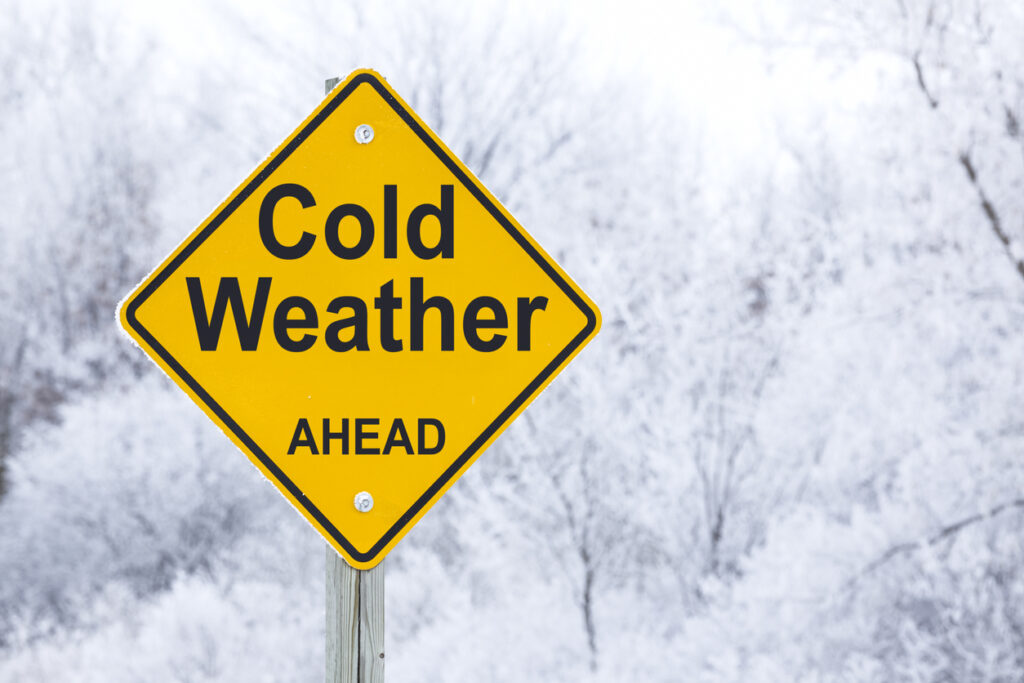
Let’s face it, winter is not over. That means that as a business owner, it is essential to stay on top of protecting your property from frost, freeze, and snow.
After all, weather extremes are becoming increasingly common, and the winter season brings with it a unique set of challenges. Preparation and protection are key to mitigating risk and safeguarding your property. Winter may be a season of beauty, but it can also be a season of potential hazards.
To help you navigate the cold, we’ve compiled the following winter property maintenance tips. These maintenance, improvement, and repair suggestions will not only ensure a snug and warm environment, but also contribute to your property’s longevity.
Ensuring Winter Protection for Your Business & Property
Being proactive in protecting your property during the winter not only ensures safety and comfort, but can also improve property value. Furthermore, the reduced risk may also have a direct impact on the cost of insurance.
The idea is to minimize the risks associated with winter. Essentially, this involves reducing the likelihood of damage and mold on the property. It also leads to fewer accidents and claims, potentially leading to more favorable insurance terms.
Now, let’s explore the essential steps to include in your winter property maintenance checklist:
1. Look for Leaks & Drafts
One of the most common issues during winter is the entry of cold air and the escape of warm air through leaks and drafts. To prevent these inefficiencies, follow these steps:
- Seal gaps around movable windows and doors with materials like plaster, Styrofoam, or weather-seal tape.
- Use window insulation kits or bubble wraps to seal windows that won’t be in use.
- Install a storm door to reduce heat loss at your property’s entrance.
- Add attic insulation to minimize heat loss through the ceiling.
- Replace drafty wooden doors with steel or fiberglass ones.
- Insulate mail openings with thick towels to keep warm air in and cold air out.
- Use curtains to keep the warm air inside during the night, thereby reducing heat loss.
2. Get Your Furnace Checked as Well
Furnaces should be inspected and maintained at least annually. Imagine the discomfort of realizing your furnace isn’t working properly just when you need it the most. Don’t wait until you’re shivering – getting your furnace checked early allows you time to address any issues or consider a replacement if necessary.
Additionally, remember to have your air ducts serviced to ensure efficient airflow and warmth. When servicing is performed by your own employees, make sure that they are practicing ladder safety to prevent falls. Regularly changing furnace filters is essential to maintain your furnace’s functionality and ensure it runs smoothly.
3. Use Ceiling Fans with Reverse Blades
Ceiling fans aren’t just for cooling during the summer; they can also help keep you warm in the winter. If your business has ceiling fans, use them strategically. During warmer months, set the fan blades to rotate counterclockwise, which pushes cold air downwards. In the winter, switch the blades to rotate clockwise, helping to draw warm air downwards and keeping you cozy.
4. Prepare for Storms & Emergencies
Winter storms can be unpredictable, so it’s crucial to stay informed about weather forecasts. If a winter storm is on the horizon, make sure your emergency kits are ready to go, and your vehicles have been properly serviced. Maintain a full fuel tank to ensure you’re not left stranded during an emergency.
For those without a generator, now might be the perfect time to invest in one. Generators can help keep your business up and running (and warm) until power is restored, providing essential peace of mind and customer satisfaction.
5. Other Considerations for Winter Preparedness
While we’ve covered a few critical areas in winter preparedness, there are a few more considerations that can help prevent damage and losses during the cold months:
- Exterior Water Sources: Ensure outdoor faucets and irrigation systems are turned off and properly drained to prevent frozen and burst pipes. Insulating these fixtures can provide an extra layer of protection. This risk is also present in case of excessive wind, rain, or snow during the winter.
- Landscaping and Trees: Prune overhanging branches and remove dead trees to prevent them from falling and causing damage during winter storms. Additionally, clearing leaves and debris from gutters and drainage systems helps prevent blockages and ice buildup.
- Emergency Kits: Consider creating a property-specific kit. This could include essential tools for winter maintenance, such as shovels, ice melt, and snow blowers, to keep driveways and walkways clear. However, make sure you are following the necessary plowing safety tips when doing so.
- Fire Safety: Ensure that fire extinguishers are easily accessible and in working condition. Additionally, educate your employees on fire safety protocols, such as proper use of space or propane heaters and wood-burning stoves.
- Regular Maintenance: Consistent maintenance throughout the year can significantly reduce the risk of winter-related damage. Check your property for areas that might require repair or attention, such as loose shingles, damaged siding, or deteriorated caulk.
- Insurance Review: Take this opportunity to review your property insurance policy to ensure it adequately covers potential winter-related risks. Engage with your insurance agent to discuss any necessary adjustments or additional coverage options.
- Communication Plan: Establish a clear communication plan for emergencies. Ensure everyone knows how to contact each other in case of severe weather-related disruptions.
- Heating and Energy Efficiency: Consider investing in a professional energy audit to identify areas where your property can become more energy efficient. Improving insulation, sealing gaps, and upgrading heating systems can result in long-term cost savings.
- Vehicle Maintenance: Don’t forget your vehicles. Ensure your business vehicles are properly equipped with winter tires and emergency supplies, and have them serviced to prevent breakdowns during freezing temperatures.
By addressing these considerations, you’ll further fortify your property’s defenses against winter’s challenges. Remember, the more proactive you are in your approach to winter preparedness, the more likely you are to prosper through the season unscathed.
Conclusion: Prepare, Protect, & Prosper
Winter can be harsh on your property, but with the right precautions, you can avoid costly damage and discomfort. By incorporating these straightforward steps into your winter property maintenance checklist, you’ll be well-prepared before the frost sets in:
- Insulate exposed pipes to prevent freezing and bursting.
- Ensure your sewage system is functioning correctly and unobstructed.
- Seal walls and roofs effectively to prevent condensation and moisture, which can lead to mold growth.
- Keep your gutters clean and free of ice, debris, and obstructions to prevent collapses.
- Shut off outdoor pipes and faucets, insulate them, and protect your property from water leaks.
As the winter season continues, embrace the opportunity to prepare, protect, and ultimately prosper. Remember that at Acadia Insurance, we’re here to support you in securing your property and ensuring a smooth winter season. Get in touch with Acadia Insurance agents today to learn more about how our insurance solutions can further enhance your peace of mind.
There for You: Acadia Insurance
At Acadia, we’re all about helping businesses throughout the Northeast thrive. Our mission is to provide superior service and products as close to you as possible, providing you with the coverage you need to proceed with confidence.
We understand what you want most from your insurance is security and peace of mind. That means knowing you are working with an insurance provider who will support you every step of the way to help you protect your business.
With Acadia, not only can you get coverage tailored to your needs, but you will also receive support from dedicated claims professionals to guide you through the claim process in the event of a loss. That way, you know exactly what to expect. Knowing your claims professional by name and a handshake – that’s “Closer Coverage”. Get to know more about how we work and find an agent near you by going to the Find an Agent section on our public website (www.acadiainsurance.com).
Acadia is pleased to share this material for the benefit of its customers. Please note, however, that nothing herein should be construed as either legal advice or the provision of professional consulting services. This material is for informational purposes only, and while reasonable care has been utilized in compiling this information, no warranty or representation is made as to accuracy or completeness. Recipients of this material must utilize their own judgment in implementing sound risk management practices and procedures.



